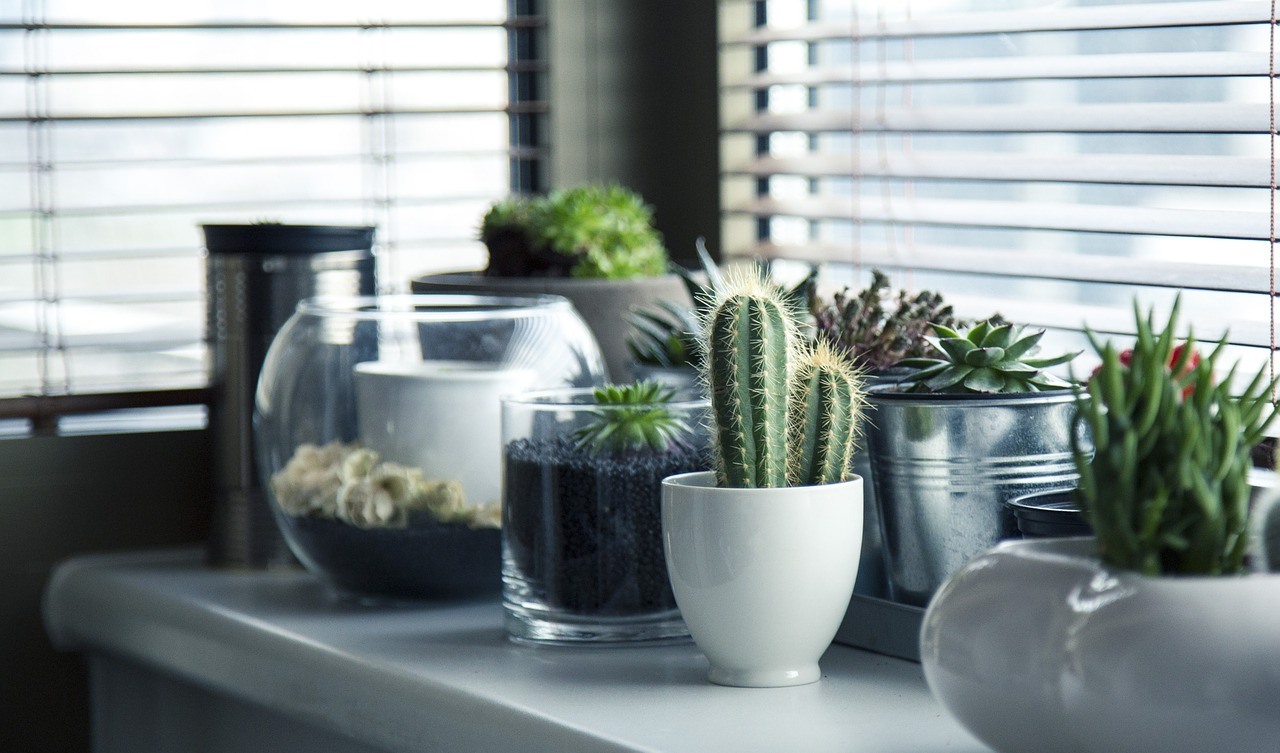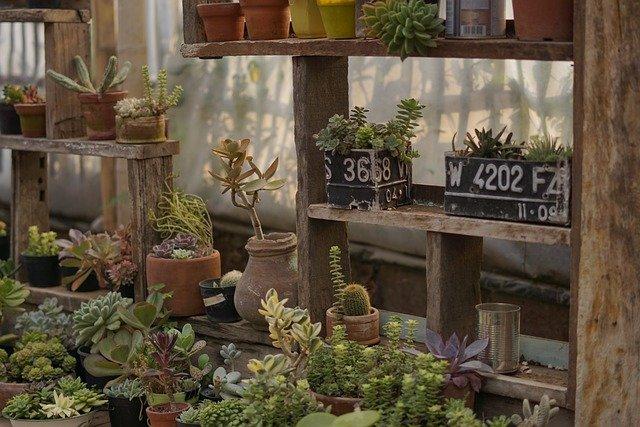Moving With Plants: How To Move Plants Safely When Moving To A New House?
How do you move plants safely when moving to a new house?
So you've just found your dream new house, and you can't wait to move. Suddenly a daunting realization comes over you. How will I be able to transport my beautiful outdoor plants into my new garden? How damaged will my indoor plants get during the move? And how can I move my potted plants without damaging them?!
Fear not, as we have all the advice you need when it comes to moving with plants!

Moving plants safely and effectively
The first step in the moving process is to plan ahead. If you are a keen gardener who has invested a lot of time in your garden, take time to decide which plants or cuttings you wish to take with you and which pones you are happy to leave behind. Prioritize your prized plants as it will likely be impossible to take your whole garden with you!
Remember to plan with your new garden in mind, as there's no point taking a whole load of plants, shrubs and trees with you if there won't be enough room for them in your new garden.
Once decided on the ones you want to take with you, start to prepare your plants at least a week before moving house. Remove any dry or dead leaves from your plants and prune the branches to renew them.
In general, it's preferable to move plants while they are in their dormant state, as many will not respond well to being 're-rooted' at other times of the year. Do some research to find out which of your plants are dormant at the time of your move.
When it comes to trees and shrubs, it's much easier to move them when they are younger and still growing.
Remember to always communicate your garden plans with the new owner of your house! Your beautiful garden may have been a selling point for them, so make sure to let them know about any changes you'll be making before you hand over the deeds.
When to move plants?
Of course, when moving with plants, we have to take the time frame and season with a pinch of salt. We don't expect you to plan the move to your new home based entirely on your garden, but unfortunately, the season will impact how smooth the process goes come moving day.
If possible, it's best to move perennials during the early spring or mid Autumn when temperatures are not overly warm. It becomes far harder to successfully move your plants from one location to another in hotter, drier weather.
For trees and shrubs, it is optimal to wait until the winter months to transport them. However, if the season has been particularly wet, a late spring or summer move may be possible. If you live in a particularly wet country, such as Scotland, moving plants is far easier compared to living in a dry, hot country. Try not to worry too much about the impact of the seasons on your move, but do bear these tips in mind as a general rule when moving house.
Advice for moving outdoor plants
Where possible, outdoor plants should be placed in a dry, sheltered area ahead of the move. Depending on the type of plant and time of year, it can also be beneficial to give larger or climbing plants a prune ahead of time. Cutting your larger plants back will help minimize the risk of damage and will allow you better package them safely and effectively.
It's essential to consider the weather when removing outdoor plants from their soil. If the forecast is for hot weather, an evening slot is best. In colder temperatures, it's best to do your digging in the daytime. Always water the soil a day beforehand to ensure the roots have had good access to moisture. This will make the ground easier to dig.
When uprooting your plants, it's essential to dig as far around the plant as you can, as this helps keep the root structure intact. Once uprooted, cover the roots with loose soil and wrap them in a layer of protective sheeting. You can also add a layer of insulation if it's cold. Then you can move then into the predetermined sheltered area before the moving house process begins.
In-between the uprooting phase and the move itself, your relocated plants will require hydration in some quantity or another. Using a water sprayer will keep most plants sufficiently hydrated and looking fresh whilst they wait to be replanted in their new home.
How to pack plants
You should give all of your potted plants a good check over and ensure that the pots are in a fit state for travelling. If you spot any cracks or breaks in the pots, do not ignore them! These could be exacerbated during the move, and you could end up with a dead plant and a ruined pot on your hands!
If you take your outdoor plants out of the earth, consider utilizing plastic pots to temporarily store them. You can also use boxes lined with soil or garden compost to transport your plants safely. Wrap the roots together with some string and use sticks or canes for additional support.
Be sure to wrap all your plants gently in packing paper, creating a cylinder around them. Remember to allow for plenty of air pockets so they can breathe properly when on the move. The last thing you want is for them to be starved of oxygen after all the hard work you've put in to keep them alive!
Box your plants neatly and fill in the space around the pots with paper, so the plants don't move too much or bang together when in transit. Poke sufficient air holes in the boxes so they can breathe freely. If they are tall, larger plants that stick out of the box, you can put some tape around the stem to hold it against the cardboard without being too tight.

Moving indoor plants
Moving indoor plants is a bit easier. Moving plants that live in small plant pots is relatively simple. You can group them together in one larger box or wrap them in plastic bags to protect the flowers and leaves. Once again, we advise you always to make sufficient air holes so they can get enough oxygen to breathe.
Transferring any of your larger plants into plastic pots can be a good tip as it may help prevent any precious plant pots from breaking.
In the case of some more resistant indoor plants, such as cacti, it is best to remove them from their pots and into packing paper. Add an extra layer of bubble wrap for greater protection.
When dealing with particularly fragile plants, it's important to wrap them in multiple layers of paper and bubble wrap. The trick here is to give them enough protection without wrapping them so tightly that you cause damage to the flowers or stems.
Will all removal companies transport plants?
We recommend discussing all of your moving plans with your removal company, as some removal companies avoid moving plants as they know how easy they are to damage.
Plants need ample space to be moved effectively as they can't simply be stacked along with the rest of the boxes or piled on top of other items. Having this quick chat with your removal company will help you and them prepare correctly for moving to your new home.
Here at Caledonia Removals, we specialize in providing a friendly, efficient service that suits our customer's needs. Find out more about our removal services by getting in contact.
What to do when you arrive at your new home
The first thing you should do when you get to your new home is to remove the plants and clean them with a damp cloth in case they have accumulated any dust. Keep them in a cool, dry place, out of direct sunlight.
It is advised to place any outdoor plants directly into the soil. If possible, plan out your garden beforehand and have some pre-dug holes ready for your arrival. Even if this is not their permanent location, it will do them well to get back into the earth to soak up the elements. Take some additional time to water all of your plants, as they will likely be feeling dried out and dehydrated after the move.
After this initial stage, begin to place each one in the most suitable place for its conditioning, depending on the type. In general, plants need sunlight, but there are more resistant ones, and others need particular temperature and humidity conditions. Take notes beforehand to avoid getting mixed up with which plants go where.
Moving plants always carries a risk, and even if you take the necessary precautions, some plants may not make the journey successfully. However, by following these simple tips, you will be in a great place to safely move your plants from one location to another!

